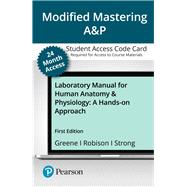For the two-semester A&P laboratory course.
Get hands-on with this affordable, integrated A&P lab manual
Laboratory Manual for Human Anatomy & Physiology: A Hands-on Approach maximizes learning by using a diverse collection of pre-lab, lab, and post- lab activities, over 100 specially-commissioned photos of anatomical models, and over 50 robust lab videos. Students prepare for labs using a variety of learning modes, such as coloring and labeling activities or watching lab videos. The straightforward, step-by-step lab activities provide concise background information and feature images of anatomical models and cadavers. The variety of anatomical models and cadavers reinforces what students learn from studying actual models in the lab and helps them identify and remember key anatomical structures. The manual is priced to provide a high-quality lab manual with premium digital content at an affordable and reasonable price.
The lab manual incorporates the terminology and much of the artwork used in Erin Amerman’s Human Anatomy & Physiology text, but can accompany any A&P textbook. The lab manual is available in three versions for your students: Main, Cat, and Pig. The Cat and Pig versions are identical to the Main version except that they include seven additional cat dissection and 9 additional pig dissection exercises, respectively, at the back of the lab manual.
Personalize learning with Mastering A&P
By combining trusted author content with digital tools and a flexible platform, Mastering personalizes the learning experience and improves results for each student. Mastering A&P provides an extension of learning, allowing students a platform to practice, learn, and apply knowledge outside of the classroom.
You are purchasing an access card only. Before purchasing, check with your instructor to confirm the correct ISBN. Several versions of the MyLab™ and Mastering™ platforms exist for each title, and registrations are not transferable. To register for and use MyLab or Mastering, you may also need a Course ID, which your instructor will provide.
If purchasing or renting from companies other than Pearson, the access codes for the Mastering platform may not be included, may be incorrect, or may be previously redeemed. Check with the seller before completing your purchase.












